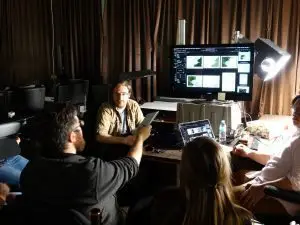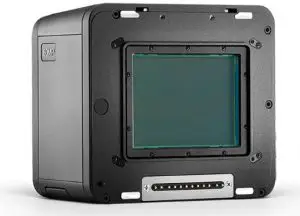Beauty is in the Eye of the Camera: Crowley Advances Imaging Services

What makes a “good” image? It is a universally acknowledged truth in our modern culture that good images are not blurry, have some sort of composition and do not have a finger in the shot (a fact never mentioned to my grandmother). While the subject matter and composition of a good image are often up for debate, the technical specifications are not, especially in regard to archival imaging. Technical guidelines such as the Federal Agencies Digitization Guidelines Initiative (FADGI) and Metamorfoze standards for digitized and digital-born historical, archival and cultural content have become the benchmark for archival images used by preservation-minded institutions worldwide. The Crowley Company has offered FADGI- and Metamorfoze- compliant services for nearly seven years and has recently purchased two IQ3 100MP Digital Back camera systems to further advance the quality of the service bureau imaging services.
I spoke with three of Crowley Imaging’s digitization specialists who, in addition to having a combined 85 years of industry experience, represent all aspects of Crowley’s service bureau: management, business development and production. Below, vice president and co-owner Pat Crowley [PC], senior imaging specialist Dave Westcott [DW] and senior project manager Andrew Fertig [AF] answer my questions about the new Digital Transitions (DT) IQ3 100MP Digital Back camera systems.
Q: Can you describe the high-resolution camera system in lay terms?
A: [AF] The two systems each consist of scanning beds, lighting, new 100MP Digital Back cameras and correlating software. The cameras offer exceptionally high-resolution images and can be used in three different ways: on reflective materials; transmissive materials; or bound or loose documents. This flexibility allows us to digitize a large variety of media from photos to negatives to fragile bound materials.
Q: How did the Crowley team prepare for the new systems?
A: [AF] Our system operators and managers spent two days training on the updated capture and software aspects of the cameras. It was exciting to learn a new system and most were surprised by the ease-of-use and quick setup. The unit comes with an expansive software suite that might have been overwhelming, but we are fortunate to have an expert in the nuances of color and light, [Crowley technician] Corin Van de Griek, at our side to assist with the learning process over the next few months.

Q: How will this hardware expand Crowley’s service offerings?
A: [PC] More and more projects require compliance with FADGI and Metamorfoze scanning guidelines. Although Crowley has offered these services for several years, we can now further expand our offerings by providing the larger field of view and higher resolution scans often required by these guidelines. [DW] The DT cameras also offer advanced color management and customization in terms of software and improved post-processing workflows. This allows us to adapt our systems to accommodate each project spec and client requirement that comes through our doors.
Q: Why is it important for Crowley to offer these type of services?
A: [DW] A large part of keeping our services on the cutting edge is paying attention to the evolution of our customer’s needs over the past two decades. Crowley Imaging has developed a specialization in graphic arts/photo digitization for museum, library, archive, media and publishing clients. As the needs of this client base develop, more demanding technology is required to keep up. The images produced by the cameras meet the highest standards in our industry.
Q: Why are FADGI and Metamorfoze compliance significant to clients?
A: [AF] These guidelines provide quantitative judgments for determining image quality. They allow for tangible scoring in technical areas such as resolution, light balance, color accuracy and others. By having a widely-acknowledged set of guidelines, the imaging world is able to create consistent, high-quality images across archives and services. [PC] These guidelines are the standard in the cultural heritage and archiving industries. More agencies and institutions are adopting, implementing and developing compliance standards, leading to a global standardization of images. These camera systems allow us to advance our services in line with the evolution of the industry.
Q: My understanding is that there are just a few service bureaus that use this system. Why do you think that is?
A: [PC] This system is primarily for those that serve the cultural heritage space, which is a very niche service. Capturing quality images for this vertical requires a background in archival scanning methods that focuses on material handling and an attention to detail that is time-consuming and – sometimes – difficult to manage. [DW] I would add that the 100MP system is the highest quality system available on the market today and not every service bureau has the resources to invest in new technologies. According to the manufacturer, we are in an extremely select group. This is an investment that shows our continuing commitment to archival imaging services.
Learn more about the digitizing capabilities of Crowley Imaging
For more information on the digital and analog conversion services offered by Crowley Imaging, please visit our website or call (240) 215-0224. General inquiries can be emailed to [email protected]. Stay connected and follow The Crowley Company on Facebook, Twitter, Google+, LinkedIn, Pinterest and Youtube.

